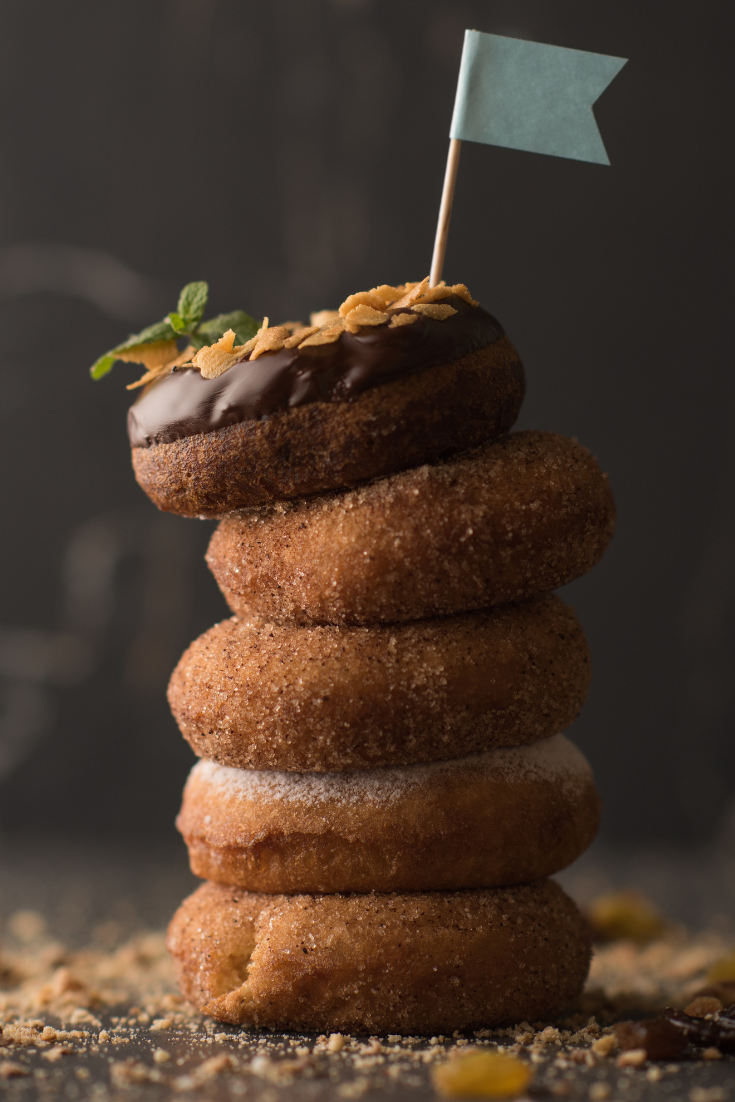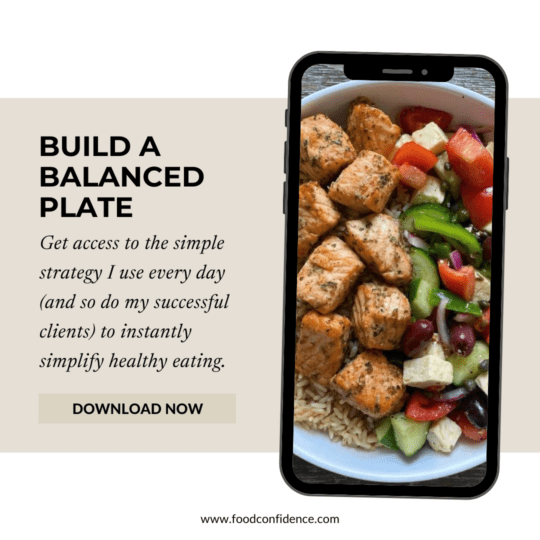When it comes to cutting back on sugar, it’s important to have a plan. If you’ve ever tried to quit cold turkey, you know first hand that avoiding sugar altogether is stressful, unsustainable, and leaves you craving it more than you ever did before — none of which is good for your mental health or resolve. At the same time, eating too much sugar is one of the main culprits in the manifestation of chronic diseases like obesity, diabetes, cardiovascular disease, kidney disease, and metabolic syndrome.
So, how do you strike a balance? By creating a sugar strategy.
I like to define a sugar strategy as a personal policy for how, when, and why you eat sugar. First and foremost, your strategy has to be sustainable long-term — and this means it has to be reasonable and meaningful. Telling yourself you’ll never eat sugar again is not a policy. It’s a recipe for rebellion that will leave you knee deep in jelly donuts before you even get started.
The most effective sugar strategy is one that allows for a natural intake of sugar. Anything that feels too forced or restrictive will likely backfire and lead to bingeing, regret, guilt and shame.
Creating a sugar strategy is not one-size-fits-all and I can’t create it for you. It has to be meaningful and motivating to YOU. It also requires you to do some inner work first to figure out the reasons behind your desire for sugar and sweet foods, and why you overeat them.
Here’s how you do it:
1. Get Triggered
Figuring out the triggers behind your desire for sugar and the situations in which you find yourself craving and overeating sugar is the first step towards creating a successful sugar strategy. Beating a sugar craving requires being mindful of your triggers. Have you set up your life so that sugar is “the answer” to your problems? Whether it’s stress, boredom, procrastination, fatigue, sadness, pain, fear (or another emotion you don’t want to feel) is sugar your go-to to drown out unwanted emotions? For many, sugar cravings are a response to being triggered by an emotion. Seeing yourself react in this way is a great opportunity to understand yourself better. Noticing, for example, that after every Friday team meeting, you “crave” a sweet snack from the vending machine. Or after dinner, when you’re watching TV, how you suddenly “need” a sweet snack. Or after every call with your mom you find yourself craving a Starbucks frappucino. These moments that trigger you are a window into what’s behind your desire for sugar, so take note.
2. Ask Yourself This Question
Now that you’ve become more aware of your sugar triggers, you’re one step closer to changing your relationship with sugar. Once you get used to noticing how often you reach for a sweet, you’ll begin to break your impulsive reaction to cravings. So when you hear yourself saying “I want something sweet,” you know you’ve tripped your silent alarm. The mindful work starts right after your alarm goes off, and this tends to be the hardest part for my clients. When you hear the alarm, ask yourself: what am I really needing right now? Hint: it’s not sugar…in fact, it’s likely not food-related at all. If you’re open to understanding yourself better, the answer will be right there, bubbling at the surface.
3. Make it Count
What if you just want something sweet? Yes, it happens! Here’s where it really helps to have standards. For me, I make my sugary snacks count. Go big or go home, right? I recommend you choose something you will truly enjoy. If you’re going to indulge, make it be the most enjoyable, high-quality treat you can muster up and really take the time to savor it. There’s little satisfaction in scarfing down a cheap chocolate bar just to get the sugar rush (see 1 and 2 above). Instead, savor a square of really nice dark chocolate and enjoy its flavor and quality. Or plan to have your favorite decadent dessert on Friday night. By consciously choosing higher quality sweets that truly satisfy, you’re far less likely to give into a sugar craving at the vending machine or gas station. Make your sweets count!
4. Decide on Frequency
Another principle I’ve found helps many people is to limit yourself to one sugary snack per day. Most of us realize that having all the sugary snacks we want, anytime we want them, isn’t going to end well. However, when you’ve planned for a square of chocolate or a small scoop of ice cream for dessert, it’s a lot easier to skip out on those mid-morning or afternoon temptations without feeling deprived or restricted. Deciding when you will have your snack early on will make sweets far more enjoyable, as no guilt or shame is attached to a planned snack. It will also help you to treat sugar with respect, as you learn to appreciate and look forward to what you’ve chosen.
5. Focus on Natural Sugar
Another way to get a handle on your sugar intake is to opt for natural sugars. This way you can still fulfill a sweet tooth, but in a much healthier way. Even though the sugar found in fruit is still sugar, it’s found naturally alongside fiber, vitamins, minerals, and antioxidants. That’s a much better deal than added sugars, which pack on grams of sugar without adding any nutritional value. Satisfying your sugar cravings with fruit is a fantastic way to limit excess sugar while upping your produce intake – something that’s long been associated with healthy body weight and lower cardiovascular risk.
6. Don’t Get Weird
I love my veggies as much as the next gal, but I also love a little sugar in my life. Keeping it realistic is my goal and cutting out all sugar in your diet isn’t normal. It’s also unrealistic, unsustainable and most of all, unnecessary. In other words, stop being weird about sugar. It makes sense for there to be a moderate amount of added sugar in some packaged foods (think granola and energy bars, marinades, and salad dressing). Eating something that is made infinitely better with the addition of 1-2 grams of sugar isn’t going to hurt you and it’s not the end of the world. As soon as you start getting crazy about this, you’ve missed the point entirely. A few grams of sugar in your bbq sauce is not the same thing as eating a jelly donut for breakfast everyday with a Big Gulp on the side.
Putting It All Together
If you want to go from being in a battle with sugar to being in a relationship, cutting it out completely and denying yourself isn’t the answer. You can have your cake and eat it, too – just choose a cake you truly enjoy. Savor the flavor and the company it comes with. And then, my friends, let..it…go. Don’t make it mean anything about you, your resolve, your will power, or your weight. Instead, try it my way: recognize your cravings as triggers, create new responses to those triggers, set reasonable limits on your intake, and focus on quality.
Good luck!

